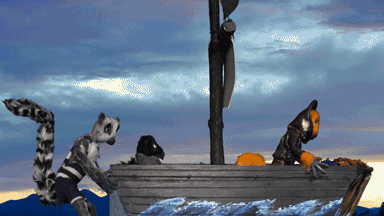On Thursday, October 12, Clement Hil Goldberg‘s Our Future Ends, opens at CounterPulse and runs Thursdays through Saturdays until October 21. This multidisciplinary work is a sad, yet hopeful, satire that unearths Lemuria, a mythical site, in a performance and visual arts installation that offer parallel narratives about species extinction and cultural extinction. CounterPulse recently published an interview with Goldberg about the project.
Lemurs (from lemures or ghosts) are the most endangered mammals on the planet. Displaced from their homeland in Madagascar, they are housed in captured breeding programs for research and to maintain diverse genetic populations, but even if their species is rehabilitated to adequate numbers in captivity, they will not be able to return home as 90% of their original forests are gone and deposits of mineral riches in Madagascar continue to be mined. Lemurians were queer prehistoric entities, occult-imagined divine androgynes that went extinct along with the Atlanteans.
The World Wildlife Fund has reported that the planet’s wildlife population has declined in half since 1972, an uncanny time period for the artists, culture, and community lost to the AIDS crisis. By 2020, nearly two-thirds of wildlife may be lost to the planet. Clement Goldberg — director, writer, and animator of Our Future Ends — projects that wild queer spaces face a similar fate.
Oscillating between video documentation, animation, dance, and theater, Our Future Ends combines live performances from Brontez Purnell, Maryam Farnaz Rostami, and Heather Maria Acs as both long-extict Lemurians and the voices of stop-motion animated lemurs. Additional voices are provided by Xandra Ibarra, Zackary Drucker, Ben McCoy, Silas Howard, and Siobhan Aluvalot.
Tickets are available through the CounterPulse box office. Audiences are urged to arrive at least 15 minutes early to view the Our Future Ends visual installation in the arts center’s space.

